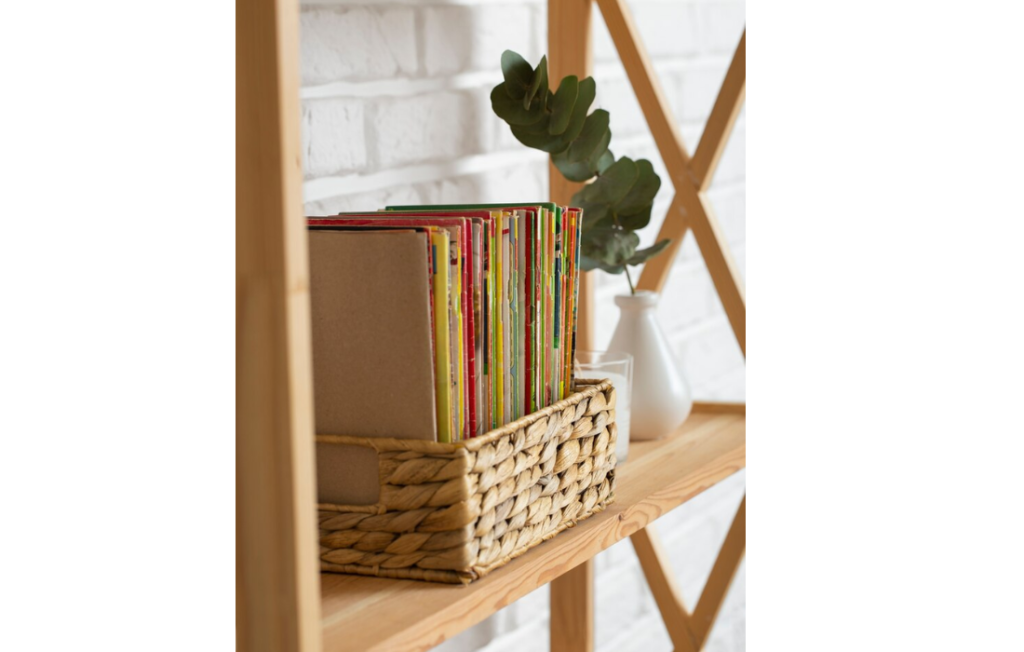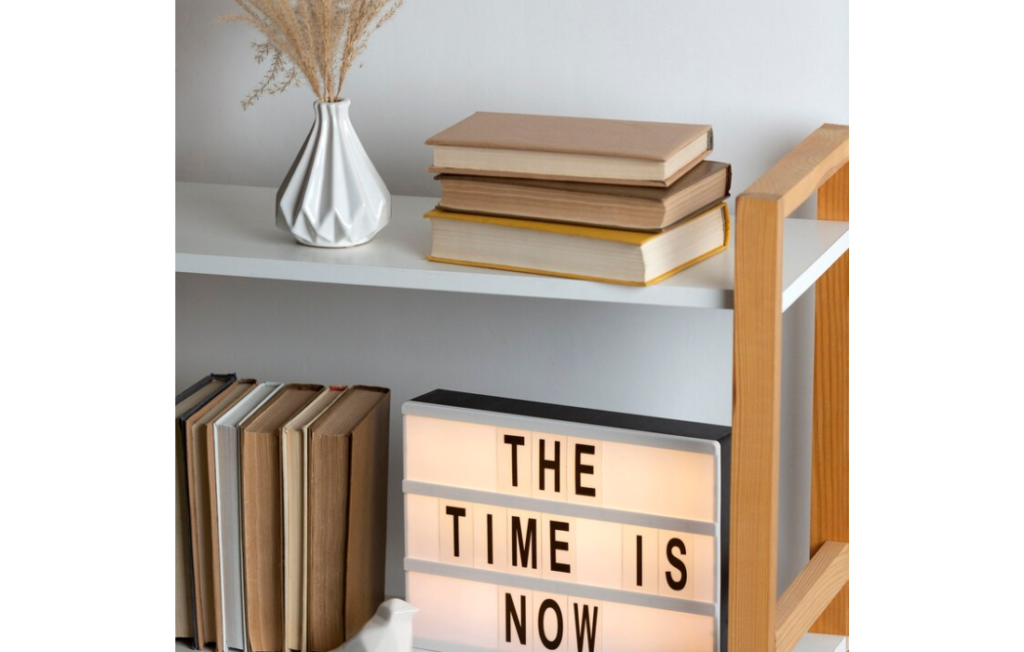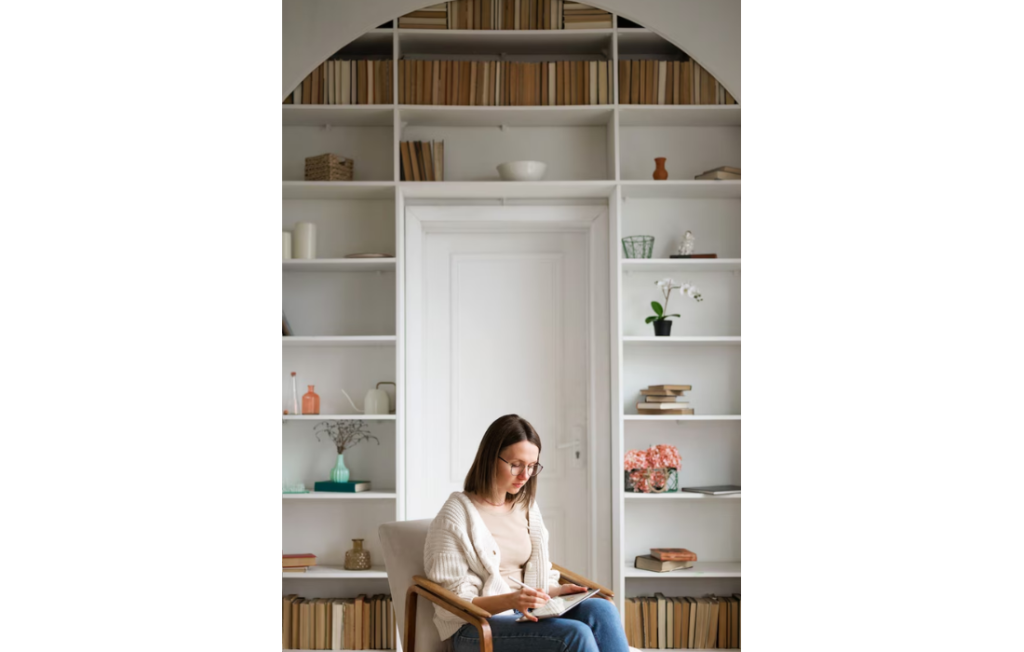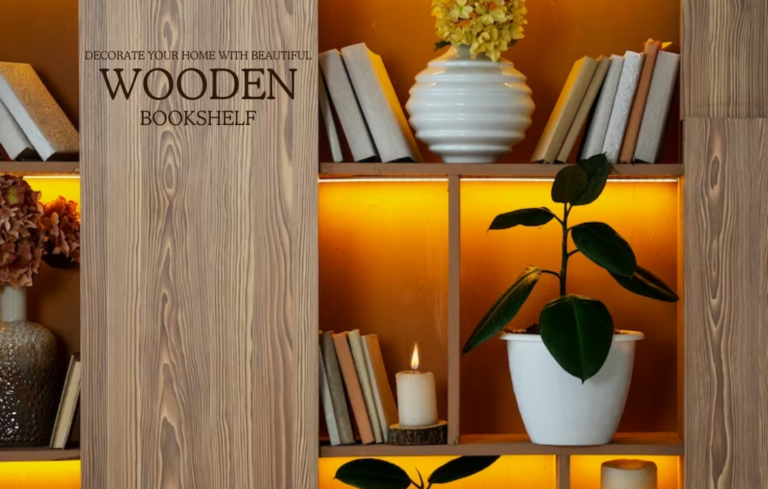In an age dominated by digital media, the allure of physical books remains ever-present. And what better way to showcase your collection than with a timeless wood bookshelf? Whether you’re a bibliophile looking to organize your treasures or an interior design enthusiast seeking to add warmth and character to your space, investing in a wood bookshelf is a decision you won’t regret. In this comprehensive guide, we’ll delve into everything you need to know about wood bookshelves – from choosing the right type of wood to styling tips and maintenance advice.
Table of Contents
Types of Wood Bookshelves

1: Solid Wood Bookshelves
Solid wood bookshelves are crafted from a single piece of wood, offering unparalleled durability and longevity. Varieties like oak, cherry, and maple are popular choices due to their strength and natural beauty. While solid wood bookshelves may come at a higher price point, their timeless appeal and ability to withstand the test of time make them a worthwhile investment.
2: Engineered Wood Bookshelves
Engineered wood bookshelves, such as those made from MDF (Medium-Density Fiberboard) or plywood, offer a more affordable alternative to solid wood. These shelves are constructed by binding together wood fibers or veneers, resulting in a sturdy yet budget-friendly option. While they may lack the same level of authenticity as solid wood, engineered wood bookshelves come in a variety of finishes and styles to suit any decor.
Factors to Consider When Choosing a Wood Bookshelf

1: Size and Space
before purchasing a wood bookshelf, consider the dimensions of your space and the size of your book collection. Measure the area where the bookshelf will be placed to ensure it fits seamlessly into your room without overwhelming the space or obstructing pathways.
2: Style and Design
Wood bookshelves come in a myriad of styles, ranging from sleek and modern to rustic and traditional. Consider the existing decor of your room and choose a bookshelf that complements its aesthetic. Whether you prefer open shelves for easy access or closed cabinets for concealed storage, there’s a wood bookshelf design to suit every taste.
3: Budget
Establishing a budget is essential when shopping for a wood bookshelf. While solid wood bookshelves may be more expensive upfront, they often prove to be a worthwhile investment due to their durability. However, if you’re working within a tight budget, there are plenty of affordable engineered wood options available that offer both style and functionality.
Styling Your Home With Wooden Bookshelf

1: Organizing Your Books
When arranging your books on a wood bookshelf, consider organizing them by genre, author, or color for visual appeal. Experiment with different stacking techniques and incorporate decorative bookends to add interest and personality to your display.
2: Adding Decorative Accents
Enhance the aesthetic of your wood bookshelf by incorporating decorative accents such as plants, framed photos, or ceramic vases. Mix and match textures and heights to create visual interest, and don’t be afraid to layer items for added dimension.
3: Creating Balance
Achieve balance and symmetry by distributing items evenly across your wood bookshelf. Avoid overcrowding shelves and leave some empty space to prevent the display from feeling cluttered. Remember to step back and assess the overall composition to ensure harmony and cohesion.
Organizing Wooden Bookshelf
- Sort by Category:
- Begin by categorizing your books based on genre, author, or subject matter. This makes it easier to locate specific titles and creates a sense of order on your shelves.
- Utilize Vertical Space:
Maximize the vertical space on your bookshelf by stacking books vertically rather than horizontally. This allows you to fit more books on each shelf while maintaining a neat and streamlined appearance. - Incorporate Decorative Elements:
- Add visual interest to your bookshelf by interspersing books with decorative elements such as plants, framed photos, or decorative objects. This creates a balanced and visually appealing display.
- Consider Bookend Placement:
- Use bookends to keep books upright and prevent them from toppling over. Place bookends strategically to divide sections of your bookshelf or to highlight particular books or decorative items.
- Create Zones:
- Divide your bookshelf into zones based on function or theme. For example, dedicate one section to novels, another to reference books, and a third to decorative items. This helps maintain organization and makes it easier to find what you’re looking for.
- Label Shelves:
- Consider labeling shelves to indicate the contents of each section. This can be especially helpful if you have a large collection or if multiple people will be using the bookshelf.
- Regular Maintenance:
- Finally, make it a habit to regularly dust and declutter your bookshelf to keep it looking its best. Remove any books you no longer want or need, and take the opportunity to reorganize as necessary.
Conclusion:
A wood bookshelf is more than just a piece of furniture – it’s a statement of style, craftsmanship, and sophistication. Whether you prefer the timeless elegance of solid wood or the practicality of engineered wood, there’s a wood bookshelf to suit every taste and budget. By considering factors such as size, style, and maintenance, you can choose the perfect wood bookshelf to showcase your literary treasures and elevate the design of your space for years to come.
FAQs (Frequently Asked Questions)
Q1: How do I clean and maintain a wood bookshelf?
A: To clean a wood bookshelf, use a soft cloth or duster to remove dust and debris regularly. For stubborn stains, lightly dampen the cloth with water or wood cleaner, taking care not to saturate the wood. Avoid using harsh chemicals or abrasive cleaners, as they can damage the finish of the wood.
Q2: Can I customize my wood bookshelf to fit my specific needs?
A: Many furniture manufacturers offer customization options for wood bookshelves, allowing you to choose the size, finish, and features that best suit your needs. Alternatively, you can work with a skilled carpenter to create a bespoke wood bookshelf tailored to your exact specifications.
Q3: Are wood bookshelves environmentally friendly?
A: Wood bookshelves crafted from sustainably sourced materials are an eco friendly choice for environmentally conscious consumers. Look for certifications such as FSC (Forest Stewardship Council) or PEFC ( Programme for the Endorsement of Forest Certification) to ensure that the wood used in your bookshelf comes from responsibly managed forests.



